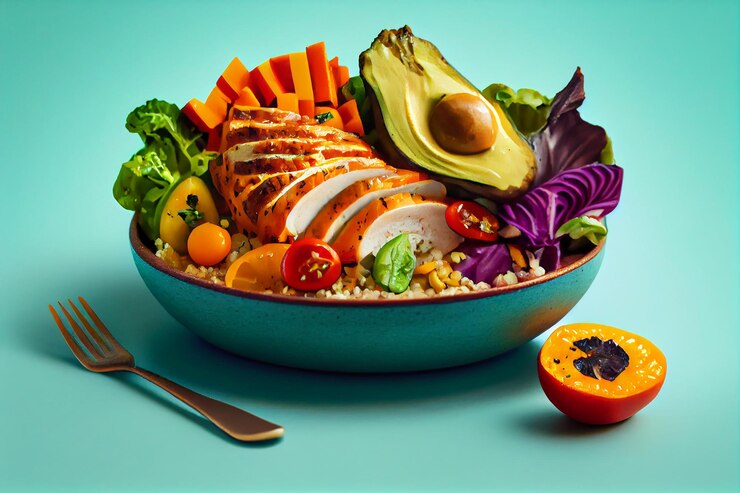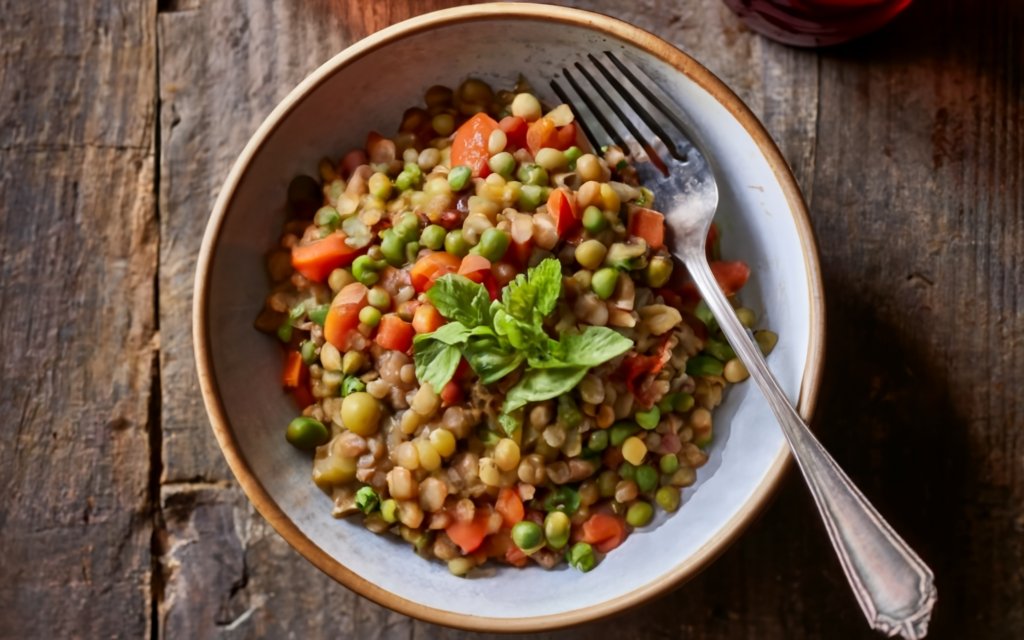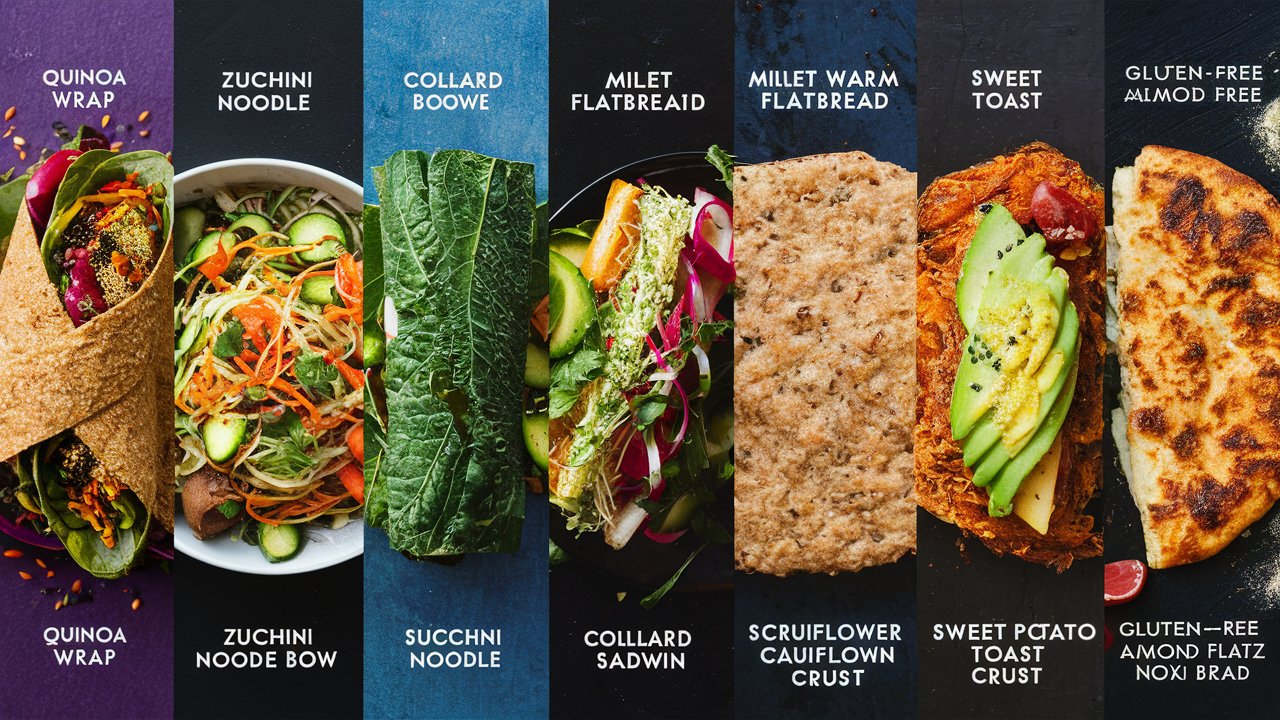As someone who’s spent over two decades reviewing, testing, and recommending products for a living, I’ve witnessed firsthand the rise of low-carb diets and the increasing demand for alternatives to traditional carb-heavy options.
Whether you’re aiming for weight loss, managing blood sugar, or simply seeking a dietary shake-up, venturing into the world of low-carb can feel daunting. But fear not, carb-conscious comrades! This guide delves into a smorgasbord of delicious and satisfying alternatives, empowering you to navigate this exciting path with confidence.
I. The Rise of Low-Carb Diets: Why Ditch the Dough?
The popularity of low-carb diets has skyrocketed in recent years, and for good reason. Studies suggest potential benefits like weight loss, improved blood sugar control, and reduced inflammation.
Popular low-carb approaches include the Ketogenic diet, which emphasizes high fat and protein intake with minimal carbs, and the Paleo diet, which focuses on whole, unprocessed foods reminiscent of our hunter-gatherer ancestors.
While the specifics vary, the common thread is a significant reduction in carbohydrate intake, typically below 100-150 grams per day. After this article, there is another I wrote about >>>>> Alternatives to Cabo San Lucas to learn more about different alternatives.

II. Exploring Carb Alternatives: A Bounty of Choices.
Now, onto the fun part: exploring the delectable world of carb alternatives! Buckle up, because we’re diving into three main categories: grains and starches, fruits and vegetables, and protein and healthy fats.
A. Grains and Starches: Bidding Farewell to Bread?
Who says you have to kiss goodbye to fluffy textures and familiar flavors? Here are some ingenious swaps:
- Low-carb flours: Ditch the wheat flour and embrace the magic of almond, coconut, or chickpea flour. These alternative flours boast impressive nutrient profiles, with almond flour being particularly rich in protein and healthy fats. Experiment with these in baking and cooking for surprisingly delicious results!
- Grain-free alternatives: Craving rice or pasta? Say hello to cauliflower rice, spaghetti squash, and zucchini noodles! These low-carb veggies not only mimic the texture of their grain counterparts but also add valuable vitamins and fiber to your diet.
- Considerations: Remember, texture and taste can differ from traditional options. Experiment with different brands and recipes to find your perfect match. Also, be mindful of hidden carbs in store-bought low-carb alternatives; always check the labels!
B. Fruits and Vegetables: Nature’s Candy Store, Low-Carb Style
Not all fruits and veggies are created equal when it comes to carbs. Here’s how to navigate the produce aisle like a pro:
- Low-glycemic fruits: Berries, melons, and grapefruit are your low-carb fruity friends. These beauties have a minimal impact on blood sugar, making them perfect for satisfying your sweet tooth without derailing your carb goals.
- Non-starchy vegetables: Broccoli, spinach, kale, and asparagus are fiber powerhouses with negligible carbs. Load up on these colorful gems to boost your nutrient intake and feel fuller for longer.
- Sweeteners, naturally: While artificial sweeteners can be tempting, explore natural options like stevia or monk fruit extract. These plant-based sweeteners provide sweetness without the carb load but remember to use them sparingly.

C. Protein and Healthy Fats: The Powerhouse Trio.
Protein and healthy fats are your new best friends on a low-carb journey. Here’s what to stock up on:
- Meat, poultry, and fish: Lean protein sources like chicken, fish, and turkey are essential for building and maintaining muscle mass. Don’t forget fatty fish like salmon, rich in omega-3s for heart health.
- Eggs and dairy (moderate intake): Eggs are nutritional powerhouses, packing protein, healthy fats, and essential vitamins. Opt for full-fat yogurt and cheese for added satiety and a creamy calcium boost, but remember to practice moderation.
- Nuts, seeds, and avocados: These nutritional champions are loaded with healthy fats, fiber, and essential nutrients. Snack on them, add them to salads or blend them into dips and sauces for a flavor and nutrient boost.
Remember, a balanced approach is key. While protein and healthy fats are crucial, don’t neglect fiber-rich vegetables for optimal health and digestion.
Stay tuned for Part 2, where we’ll delve into the exciting world of cooking with low-carb alternatives, explore the pros and cons of this approach, and answer your burning questions about making a smooth transition to a lower-carb lifestyle.
III. Cooking with Low-Carb Alternatives: Your Culinary Adventure Begins!
Embracing low-carb doesn’t have to mean sacrificing flavor or culinary creativity. Here are some tips to transform your kitchen into a haven of delicious low-carb dishes:
A. Recipe Substitutions and Swaps: Think Outside the Bun.
Get creative with substitutions! Cauliflower rice for regular rice in stir-fries, zucchini noodles instead of pasta, and almond flour for wheat flour in baking are just the tip of the iceberg. Explore online resources and recipe books bursting with low-carb inspiration.
B. Tips for Maintaining Flavor and Satisfaction: Don’t Let Taste Buds Rebel!
- Seasoning is your secret weapon: Experiment with herbs, spices, and spice blends to add depth and complexity to your dishes. A sprinkle of smoked paprika, a dash of cayenne pepper, or a dollop of pesto can work wonders.
- Embrace healthy fats: Fats like olive oil, avocado oil, and nut butter add richness and creaminess to low-carb meals. Don’t shy away from incorporating them in moderation.
- Find your veggie BFFs: Roast vegetables until caramelized, sauté them with garlic and herbs, or blend them into creamy sauces. Vegetables add flavor, color, and essential nutrients to your low-carb creations.

C. Meal Planning and Portion Control: The Key to Success.
Planning your meals and controlling portions is crucial for long-term success. Here’s how:
- Plan your week: Dedicate some time each week to plan your meals and snacks. This helps avoid impulsive decisions and ensures you have healthy options readily available.
- Portion control is your friend: Use measuring cups and spoons to ensure you’re not overindulging. Remember, even healthy foods can pack calories if consumed in excess.
- Listen to your body: Don’t deprive yourself! Eat until you’re comfortably satisfied, but not stuffed. Overeating, even low-carb foods, can lead to discomfort and hinder your progress.
Remember, this is a journey, not a race. Experiment, discover what works for you, and most importantly, have fun exploring the delicious world of low-carb alternatives!
Stay tuned for Part 4, where we’ll weigh the pros and cons of a low-carb lifestyle and answer your frequently asked questions to empower you on your low-carb adventure.
IV. Pros and Cons of Low-Carb Alternatives: Weighing the Scales.
Before diving headfirst into a low-carb world, it’s crucial to understand the potential benefits and drawbacks. Let’s balance the scales and equip you with the knowledge to make an informed decision:
A. Pros: The Potential Upsides
- Weight management: Studies suggest low-carb diets can be effective for weight loss, often leading to faster initial weight loss compared to balanced diets. This is primarily due to reduced calorie intake and potentially increased satiety from protein and fat.
- Blood sugar control: Low-carb approaches can significantly improve blood sugar control in individuals with type 2 diabetes or prediabetes. This is achieved by limiting the intake of carbohydrates, which directly raise blood sugar levels.
- Reduced cravings: By eliminating sugary and processed foods, low-carb diets can help curb cravings for unhealthy options. This can lead to improved dietary choices and overall health benefits.
- Improved insulin sensitivity: Lowering carb intake can improve your body’s ability to use insulin effectively, further aiding in blood sugar management and potentially reducing the risk of developing type 2 diabetes.

B. Cons: The Potential Downsides
- Nutrient deficiencies: Restricting certain food groups can lead to deficiencies in essential nutrients like fiber, vitamins, and minerals. Careful planning and incorporating diverse low-carb options are crucial to mitigate this risk.
- Digestive issues: Transitioning to a low-carb diet can initially cause digestive discomfort like constipation or bloating. This is often temporary and can be eased by increasing fiber intake and staying hydrated.
- Sustainability: Maintaining a strict low-carb diet long-term can be challenging and may not be suitable for everyone. It’s essential to find a sustainable approach that fits your lifestyle and preferences.
- Social challenges: Sticking to a low-carb diet in social settings can be challenging. Planning ahead, bringing your own snacks, and politely navigating options can help overcome these hurdles.
Remember, consulting a healthcare professional or registered dietitian before embarking on a low-carb journey is vital, especially if you have any underlying health conditions. They can personalize a plan that aligns with your individual needs and goals, ensuring a safe and effective approach.
Stay tuned for Part 5, where we’ll answer your burning questions about low-carb alternatives, empowering you to make informed choices and embark on a successful low-carb journey!
View other drafts
V. Conclusion: Your Low-Carb Journey Begins Now!
As we reach the end of this guide, I hope you’re brimming with knowledge and excitement about exploring the world of low-carb alternatives. Remember, this is your journey, and it’s crucial to tailor it to your unique needs and preferences.
Are all alternatives to carbs created equal? Which ones are the healthiest?
Not all alternatives are equal. Focus on nutrient-dense options like low-carb flour (almond, coconut), non-starchy vegetables (broccoli, spinach), and healthy fats (nuts, avocados). Prioritize whole, unprocessed foods over processed alternatives that might be low in carbs but lack essential nutrients.
- I’m new to low-carb eating. What are some easy starter recipes using alternatives?
Start with simple swaps! Cauliflower rice for regular rice in stir-fries, zucchini noodles with marinara sauce, or almond flour pancakes are easy and delicious options. Explore online resources and recipe books specifically designed for low-carb cooking.
Can I still eat fruit on a low-carb diet? If so, which ones are best?
Absolutely! Opt for low-glycemic fruits like berries, melons, and grapefruit. These have minimal impact on blood sugar and satisfy your sweet tooth without derailing your goals. Enjoy them in moderation as part of a balanced low-carb meal or snack.
- I’m worried about getting enough nutrients on a low-carb diet. What supplements should I consider?
While a well-planned low-carb diet can provide all the necessary nutrients, consulting a healthcare professional or registered dietitian is crucial. They can assess your individual needs and recommend personalized supplementation if needed. Remember, food should be your primary source of nutrients, with supplements playing a supporting role.
- Is a low-carb diet suitable for everyone? Are there any health conditions I should be aware of?
Low-carb isn’t a one-size-fits-all approach. Consult your doctor before starting, especially if you have any underlying health conditions like diabetes, kidney disease, or heart disease. They can guide you on whether low-carb is right for you and provide necessary monitoring during your journey.
Remember, there’s no magic bullet for health. The key is to find a sustainable dietary approach that aligns with your preferences, health goals, and lifestyle. Experiment, explore, and most importantly, enjoy the delicious world of food, even with a low-carb twist!
I am commitment to crafting compelling narratives and delivering insightful content continues to inspire and inform readers across various platforms. Explore her articles on AlternativesZone.com and FactAfterFact.com to experience a rich tapestry of knowledge and discovery. Here I Analyze and Test the products and services together with my team before we recommend them to our users. Nice Reading Here!








No responses yet